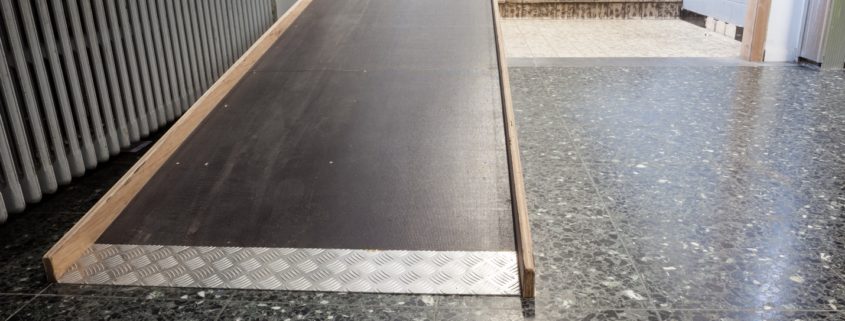Important ADA Standards Businesses Should Follow for Surfaces
The Americans with Disabilities Act (ADA) is a group of civil rights laws that exist to prevent discrimination against individuals with physical and mental disabilities. This includes mandates that demand businesses create accessible routes, like ramps and risers, that allow patients who struggle with mobility to reach, access, or enter public spaces.
This mini-guide contains important ADA-compliant standards businesses should follow for surfaces, with helpful tips to ensure your space meets all the necessary requirements.
Public Accommodations
It’s easier than you may think for your business to breach ADA regulations inadvertently. That’s a problem because lacking public accommodations in your building is considered a form of discrimination in many scenarios. ADA legislation applies to anything regarded as public space or accessible by the public, even if your business is privately owned.
Need a few examples? Restaurants, hotels, doctor’s offices, private schools, and daycare centers all fall under public accommodation law.
Public accommodations include a wide variety of structures and building designs. The ADA measure defines the minimum standards of accessibility required when altering existing and newly constructed buildings. The mandate also states that any existing barriers should be removed, assuming it’s easy to remove them and isn’t prohibitively expensive.
Business owners must make “reasonable modifications” to the ways they typically run their company to accommodate disabled individuals. These additions may include handrails, ramps, ground markers, and landing areas. Specific dimensions and designs for these structures are located on the ADA website.

Accessible Flooring
Installing accessible flooring in your business isn’t strictly mandated by the ADA—at least, not in most circumstances—but it’s still wise to consider constructing or modifying your building with ADA flooring to attract more clients and avoid any potential legal issues. Depending on how you want to design and style your business, you have several options available when it comes to ADA-compliant flooring.
Hardwood Flooring
Hardwood flooring is an excellent multi-purpose material, and it’s inherently ADA compliant. It has a very luxurious, high-end look that’s well-suited for business spaces, livening up any room, and it is also remarkably easy to clean.
The key to using hardwood in a business is to find the right type of wood. Avoid softer woods, like pine and fir, because they scuff and dent much easier than harder woods. Turn to oak, ash, cherry, maple, and cedar instead.
Ceramic Tile Flooring
Ceramic tiles are also suited to meet ADA regulations, but, like hardwood, it matters which ceramic style you choose. Avoid ceramics that have uniformly smooth surfaces, as they are traditionally slippery and may cause accidents. Tiles with textured surfaces that are at a minimum two inches in length are ideal for meeting ADA standards.
Vinyl Flooring Tiles
Vinyl flooring is a great option if you’re looking for something cheaper that’s easy to clean, water-resistant, and compliant. This material is ideal for kitchens and bathrooms, and an inlaid variation is more likely to be compliant with ADA regulations, as it is more secure. There are also luxury vinyl tiles with foam backing to make them more comfortable to traverse.
Carpet Flooring
Carpet is very resistant to slipping, but thick carpeting creates too much friction for ADA standards and can trip guests. Your carpet cannot have a thickness of greater than 1.5 inches, so look for shorter, compact piles. It’s also a cheaper alternative and is relatively easy to install compared to other types of flooring material.
Where to Find It
It can be challenging to find the right vendor for your ADA compliant flooring needs. If you’re having trouble finding the perfect ADA flooring for your business, help is available. ADA Solutions offers a wide variety of stylish ADA flooring at highly competitive prices.




